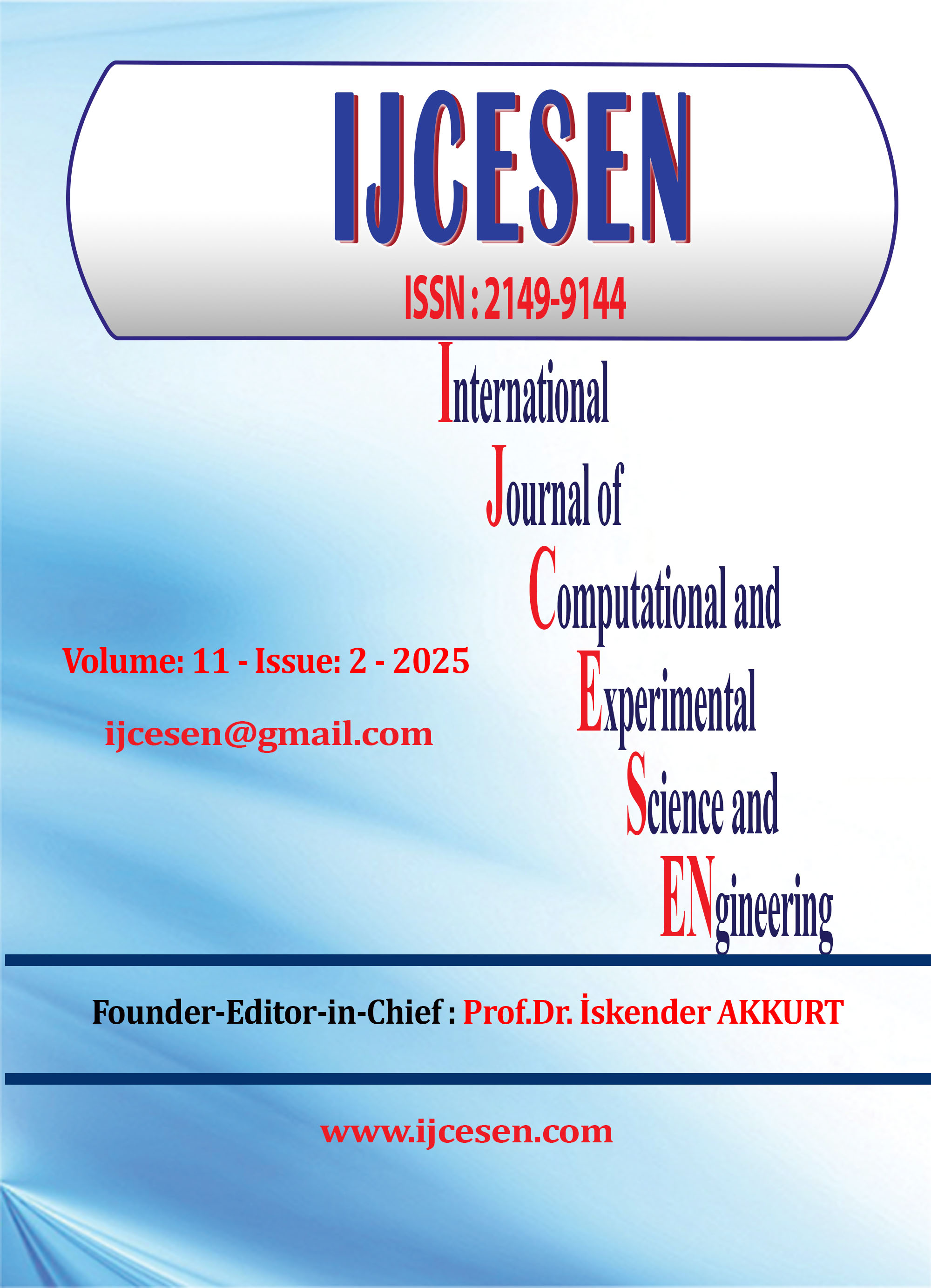The Dynamic Surface Technologies of Buildings
DOI:
https://doi.org/10.22399/ijcesen.1649Keywords:
Integrated material systems, Intelligent environment, Energy conservation, Green building technologyAbstract
This research aims at identifying novel applications of smart materials and adaptive systems into sustainable building design with emphases made to energy efficiency and environmental impacts. It review focuses on the advanced building technologies, technology of thermochromic, electrochromic and phase change materials while stressing on the capacity of the materials in responding to external stimuli like temperature an light. In particular, the application of these materials in smart windows and facades highlighted the achievement of average energy efficiency in heating/cooling at between 25 and 30%. PCMs increased building insulation by a range of 40% and reduced internal temperature changes due to external fluctuations. Incorporation of these materials with Machine Learning based Predictive Models of building’s energy usage has shown positive results of 15% of efficiency improvements in real time management of energy usage in buildings depending upon the weather conditions and occupancy of the building. Based on the exploring of the current developing trends of these technologies, this paper intends to give enlightenment on the effectiveness of smart materials in helping to design more sensitive, flexible and energy-saving buildings. The results show that integration of smart materials with IoT network is a revolutionary concept for sustainable architecture which has exposed different opportunities of up to 30% energy saving with improved comfort. The final discussion of the work provides an outlook of the current research limitations and future agenda as it concerns the challenges and prospects of these technologies for embracing green building practices in sustainable city advancement.
References
Walther, A. (2020). From responsive to adaptive and interactive materials and materials systems: A roadmap. Advanced Materials, 32(20), 1905111. https://doi.org/10.1002/adma.201905111
Yaseen, M., Khattak, M. A. K., Khan, A., Bibi, S., Bououdina, M., Usman, M., & Humayun, M. (2024). State-of-the-art electrochromic thin films devices, fabrication techniques and applications: A review. Nanocomposites, 10(1), 1–40. https://doi.org/10.1080/20550324.2023.2166010
Huang, J., Luo, Y., Weng, M., Yu, J., Sun, L., Zeng, H., & Guo, Z. (2021). Advances and applications of phase change materials (PCMs) and PCMs-based technologies. ES Materials & Manufacturing, 13, 23–39. https://doi.org/10.30919/esmm5f1105
Wang, X., Li, W., Luo, Z., Wang, K., & Shah, S. P. (2022). A critical review on phase change materials (PCM) for sustainable and energy efficient building: Design, characteristic, performance and application. Energy and Buildings, 260, 111923. https://doi.org/10.1016/j.enbuild.2022.111923
Metallidou, C. K., Psannis, K. E., & Egyptiadou, E. A. (2020). Energy efficiency in smart buildings: IoT approaches. IEEE Access, 8, 63679–63699. https://doi.org/10.1109/ACCESS.2020.2983665
Zhou, S., & Razaqpur, A. G. (2022). Efficient heating of buildings by passive solar energy utilizing an innovative dynamic building envelope incorporating phase change material. Renewable Energy, 197, 305–319. https://doi.org/10.1016/j.renene.2022.07.011
Feng, D. C., Liu, Z. T., Wang, X. D., Chen, Y., Chang, J. Q., Wei, D. F., & Jiang, Z. M. (2020). Machine learning-based compressive strength prediction for concrete: An adaptive boosting approach. Construction and Building Materials, 230, 117000. https://doi.org/10.1016/j.conbuildmat.2019.117000
Lei, Q., Wang, L., Xie, H., & Yu, W. (2022). Active-passive dual-control smart window with thermochromic synergistic fluidic glass for building energy efficiency. Building and Environment, 222, 109407. https://doi.org/10.1016/j.buildenv.2022.109407
Shchegolkov, A. V., Jang, S. H., Rodionov, Y. V., Sukhova, A. O., & Lipkin, M. S. (2021). A brief overview of electrochromic materials and related devices: A nanostructured materials perspective. Nanomaterials, 11(9), 2376. https://doi.org/10.3390/nano11092376
Civan, L., & Kurama, S. (2021). A review: Preparation of functionalised materials/smart fabrics that exhibit thermochromic behaviour. Materials Science and Technology, 37(18), 1405–1420. https://doi.org/10.1080/02670836.2021.1970320
Sobczyk, M., Wiesenhütter, S., Noennig, J. R., & Wallmersperger, T. (2022). Smart materials in architecture for actuator and sensor applications: A review. Journal of Intelligent Material Systems and Structures, 33(3), 379–399. https://doi.org/10.1177/1045389X211027123
Wang, J., Kim, S. J., Liu, J., Gao, Y., Choi, S., Han, J., & Lim, J. (2021). Redirecting dynamic surface restructuring of a layered transition metal oxide catalyst for superior water oxidation. Nature Catalysis, 4(3), 212–222. https://doi.org/10.1038/s41929-021-00578-1
Zhao, F., Chen, T., Zeng, Y., Chen, J., Zheng, J., & Han, G. (2024). Nickel oxide electrochromic films: Mechanisms, preparation methods, and modification strategies—A review. Journal of Materials Chemistry C. Advance online publication. https://doi.org/10.1039/D3TC02845A
Luo, J., Zou, D., Wang, Y., Wang, S., & Huang, L. (2022). Battery thermal management systems (BTMs) based on phase change material (PCM): A comprehensive review. Chemical Engineering Journal, 430, 132741. https://doi.org/10.1016/j.cej.2021.132741
Yan, D., Wang, Z., & Zhang, Z. (2022). Stimuli-responsive crystalline smart materials: From rational design and fabrication to applications. Accounts of Chemical Research, 55(7), 1047–1058. https://doi.org/10.1021/acs.accounts.2c00064 .
Downloads
Published
How to Cite
Issue
Section
License
Copyright (c) 2025 International Journal of Computational and Experimental Science and Engineering

This work is licensed under a Creative Commons Attribution 4.0 International License.





